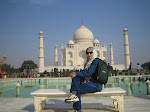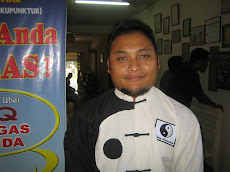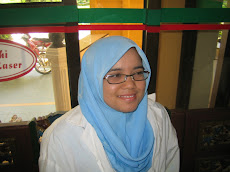Short Life History of Hahnemann Hahnemann life history
Samuel Frederick Christian Hahnemann was born at Meissen, in Saxony, on the 10th of April in the year 1755 as the third child of his parents. His father, Mr. Christian Godfried Hahnemann was a porcelain painter in a factory at Meissen. Johanna Christeana Speiss, who became the second wife of Godfried Hahnemann was his mother.
At the age of 20 he commenced his medical studies at Leipzig, and earned his living by translating into German foreign scientific works at the same time that he pursued his studies. After two years at Leipzig he removed to Vienna, to gain practical knowledge in the great hospitals there. He took his M. D. degree a Erlangen in 1779.
Hahnemann was an excellent linguist, being perfectly familiar with English, Italian, French, Greek, Latin, and Arabic.
Early years
Whilst yet a student he translated from English into German, among other works, Nugent's Essay on Hydrophobia, Stedman's Physiological Essays, and Ball's Modern Practice of Physic. From 4779 onwards he contributed to periodical literature, and in 1784, at the age of 29, he published his first original work, On the Treatment of Chronic Ulcers. In this work he expressed pretty much the same sentiment as that I have quoted from Sir Andrew Clark as to the want of principle in medicine.
He lamented "the absence of any principle for discovering the curative powers of medicines". After 1788 Hahnemann seems to have given up practice in disgust. In a letter to Hufeland, the Nestor of medicine of his day (to whose journal - Hufeland's Journal - Hahnemann was a constant contributor), he says his withdrawal was chiefly occasioned by his disgust at the uncertainties of medical practice, owing to the want of any principle for the administration of drugs in disease. During this time he occupied himself with chemical researches and the translation of works on chemistry, agriculture, and medicine, from the English, French, and Italian.
Cinchona experiment
It was whilst engage in translating Cullen's Materia Medica in 1790 that he made the classical observation which has proved to be to the science of drug study what the falling apple observed by the boy Newton has been to physical science. As his mind was always occupied with the search for some guiding principle for the selection of medicines in disease, he was struck with the unsatisfactory nature of Cullen's explanation of the action of Cinchona bark in the cure of ague.
That it did cure many cases of ague Hahnemann could not deny; and it occurred to him that if he took some of the drug when quite well he might obtain some clue to an explanation of its curative action. He took it in considerable quantities, and produced in himself all the symptoms of an ordinary attack of intermittent fever. The account of the experiment will be found in a footnote to page 108 of vol. II. of his translation of Cullen's Materia Medica.
Here Hahnemann was in possession of two related facts : Cinchona bark cured ague, and it also caused, in a sensitive, healthy person, symptoms indistinguishable from an attack of ague. Five years later, in 1796, being then 41 years of age, he published in Hufeland's Journal his essay on a New Principle for Discovering the Curative Powers of Drugs.
In this essay he referred to his early note on Cullen, and said after mature experience he could day that not only probably, but quite certainly, bark cured ague because it had the power to produce fever. He quotes examples of well-known drug actions to support his proposition, and sketched in a masterly way the characteristic features of a number of drugs. In 1805 - Hahnemann being now 50 years old - appeared two works of great importance : first, his Aesculapius in the Balance, which takes a general survey of traditional medicine and pronounces on it the verdict "weighed in the balances and found wanting" - a verdict which has since received very ample endorsement.
Second, in two vols. in Latin, His Fragmenta de viribus medicamentorum positivis sive in sano corpore observatis (Fragments on the Positive Powers of Drugs, - that is to say, their effects observed in the healthy body). This contained the first effort towards the reconstruction of the Materia Medica on a rational basis of pure experiment on the healthy human body. In 1806 appeared his Medicine of Experience, in which is contained the first complete exposition of the homoeopathic method now thoroughly thought out by him after sixteen years of unremitting work - observation, experiment, and research.
This was published in Hufeland's Journal - that is to say, in the leading professional journal of this time. The same year Hahnemann published the last work he translated - Haller's Materia Medica, Haller being one of Hahnemann's forerunners in recommending the testing of drugs on the healthy body; but Haller did nothing towards carrying his recommendation into effect. In 1807 Hahnemann first used the word "Homoeopathic" in the title of a work - an article also contributed to Hufeland's Journal - on "Indications of the Homoeopathic Employment of Medicines in Ordinary Practice;" Organon
The year 1810 may be said to be the birth-year of Homeopathy, for in that year appeared the first edition of the Organon, which is and expansion of the Medicine of Experience, and a complete statement of the Homoeopathic method. The publication of Hahnemann's Organon marks an epoch in the history of therapeutics. It constitutes a complete, practical, and philosophical statement of the art of cure. Four other editions of the work followed the first; the fifth edition appearing in 1833.
Chronic disease
By this time Hahnemann's fame as a practitioner had spread far and wide. The result was that invalids flocked to the little town of Coethen in search of his aid. The majority of these were affected with ailments of long standing, and thus it came about that Hahnemann had abundant opportunity of observing the symptoms and course of chronic diseases, and in amplifying and perfecting the homoeopathic means of curing them.
In Coethen there was comparatively little in the way of acute illness to distract him from this special line of work.. It was during this period that Hahnemann's first work on Chronic Diseases was written and the first edition was published. In 1828 the first three volumes appeared, nine years after his arrival in Coethen. The fourth volume was published in 1830, and the fifth not till after the Coethen period, when Hahnemann had removed to Paris.
Cholera
In 1831 cholera invaded Germany from the East. On its approach, on the basis of the therapeutic rules, Hahnemann fixed up on the remedies specific for it and printed direction to be circulated all over the country. As a prophylactic and remedy for the first stage of cholera, he recommended camphor and in advanced cases, 2nd and 3rd stages Cuprum, Veratrum. Bryonia and Rhus tox.
The treatment recommended by Hahnemann soon proved to be successful and even medical boards recommended his procedure. On March 31, 1830, Hahnemann had the misfortune to lose his first wife, he being then near the completion of his seventy-fifth year. She had been the stay and companion of his stormy life, and had borne him eleven children, two sons and nine daughters.
Second wife – life in paris
Nearly five years after this event there came to Coethen among the number of those who sought the aid of the modern Aesculapius, the brilliant and talented Mélanie d'Hervilly Gohier. As all the world knows, the acquaintance ended in the second marriage of Hahnemann, he then being in his eightieth year, and his bride thirty-five. But it was anything but an ill-assorted match, for all that.
The second Madame Hahnemann perceived that her husband might fill a much larger sphere of usefulness of he left Coethen and made his home in Paris. Thither she induced him to travel, and through her influence with the Government of the time she obtained for Hahnemann a license to practise in the French capital. A student of science, an artist, and something of an anatomist as well, under her husband's tuition, she rapidly developed no little skill in the practice of medicine and homoeopathy.
She became practically his assistant, as it was impossible for Hahnemann to attend to all who came to see him. Madame Hahnemann acted as his protector, and would not allow more to have access to him than he could attend to. For eight years the Hahnemann's led in Paris a life of great activity and unclouded happiness, the centre of a brilliant circle. Hahnemann's presence in Paris gave a great impetus to the study and practice of homoeopathy, and the influence of his work in that city remains to this day. On Sunday, July 2, 1843, at the age of eighty nine , he breathed his last. He was buried in the cemetery of Montmartre.
To know more about Homoeopathy please log on to
http://www.doctorshomoeopathy.org/
















No comments:
Post a Comment